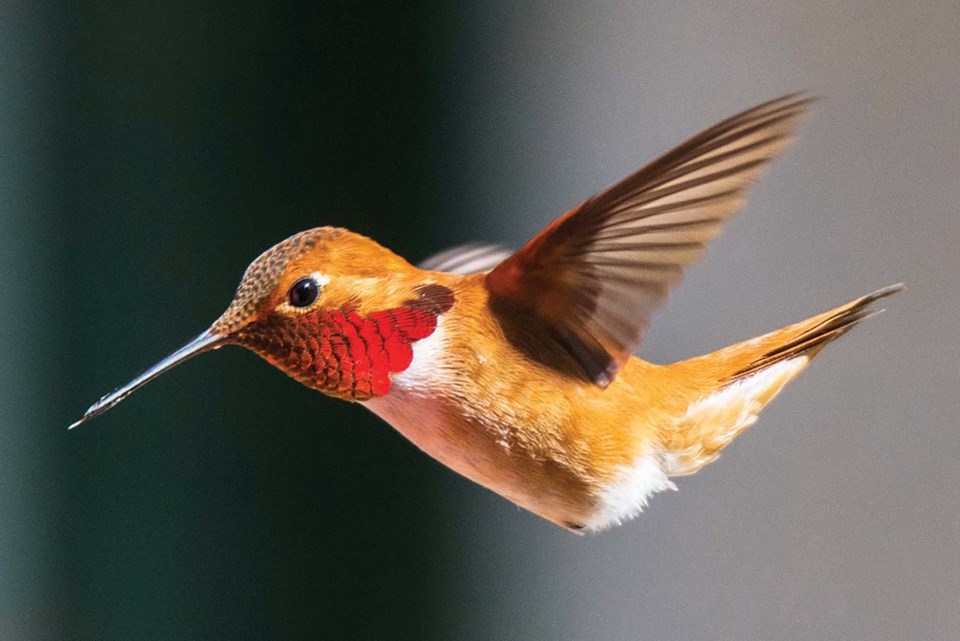The first rufous hummingbird reported finally appeared at Chris Allen’s feeder in West Sechelt on March 25, with the second at Sandra Bosch’s feeder on Egmont Road on the 31st, and on April 1, there were a number of reports from non-feeder locations. Based on 50 years of recording, I would say this is the latest arrival for the species in half a century. In some years, when there is an early spring, the birds have begun to arrive back from their Mexican winter vacations by the 5th of the month. In the decade of the 1990s, the latest arrival was the 22nd March. What is the reason for their tardy arrival? The western U.S. has been abnormally cold and wet this spring, with California suffering a series of atmospheric rivers bringing floods, landslides, and record snow depths in the mountains. A friend of mine who was in Los Angeles during March reports that he only put his shorts on when he returned to B.C.!
Mountain bluebirds are a member of the thrush family, along with robins, and they are a fairly common summer visitor to interior B.C. In migration, a small number move west of the Coast Range and each spring a few are reported on the Sunshine Coast, where they are eagerly sought by local birders. The birds are an open-country species, where they typically perch on fenceposts or similar. Reliable locations in the past have been the fields at The Shores area of west Porpoise Bay in Sechelt and Gospel Rock in Gibsons. Karen Holland photographed four males and one female at the Sechelt golf course on March 26 and others at Gospel Rock on the 28th.
Other species returning from winter absences were band-tailed pigeons on the 26th, and merlin on the 27th. Merlins do winter here, but their return to your neighbourhood is often accompanied by loud announcements of their nesting intentions…“kik, kik, kik, kik”. A visit to the grocery store in Sechelt on the 25th yielded a singing white-crowned sparrow in the parking lot, typical habitat for this abundant species.
The finches have been an anomaly this winter. Goldfinches have been common all winter for the first time ever in my experience. Usually, they are completely absent in the winter, and return about April 10. Red crossbills have also been abundant, though this is less surprising for this well-known irruptive species. Late in March, there was a sudden influx of evening grosbeaks with John Field reporting a flock of 50 in the Oyster Bay area, and it was a similar story for pine siskins. Finch movements are always a mystery.
To report your sightings or questions contact [email protected] or 604-885-5539. Good Birding.



